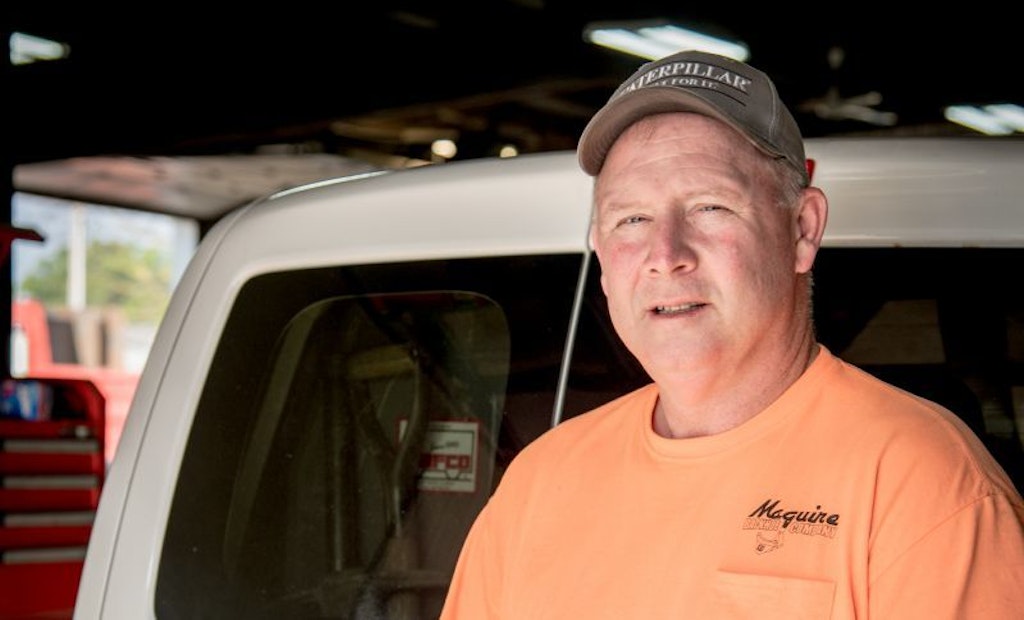Interested in Systems/ATUs?
Get Systems/ATUs articles, news and videos right in your inbox! Sign up now.
Systems/ATUs + Get AlertsDealing with challenging onsite installations is nothing new for Rick Maguire, owner of Maguire Backhoe in Virden, Illinois. Besides the usual bad soils and tight spaces, pleasing homeowners occasionally involves solutions requiring more creativity than science. One recent example was a client who designs water parks nationwide. He built a four-bedroom home with an in-ground swimming pool on a half-acre lot on Lake Springfield, but his vision did not include an onsite system.
“We still don’t know how the house was built without a septic permit,” Maguire says. “The sandy clay loam and glacial till were too tight for even a two-thirds-sized drainfield, and we couldn’t discharge because of the lake. The owner didn’t want the trees removed alongside the house, and the electrical and waterlines ran under that side of the lawn. After accounting for the 25-foot setback from the lake, we had a 150-by-50-foot-wide space on a 7 percent slope for the drainfield.”
Maguire’s crew set a Sybr-Aer sequential batch reactor (SBR Wastewater Technologies) inside an IM-1530 plastic tank (Infiltrator Water Technologies) 75 feet down the slope near the house. The unit discharged 15 feet uphill to a raised sand filter bed. “We formed the mound to resemble an undulating hill where the property curved down to this beautiful boat dock,” Maguire says. “The mound also hid the risers from the pool area. Luckily, we got there before contractors built the retaining walls and completed the major landscaping.”
Another difficult repair involved six duplexes, each with a working 500 gpd Hydro-Action aerobic treatment unit (Hydro-Action). The ponding drainfield was built on very tight, low-permeability soils. A contractor had enclosed the field with a perimeter drain, but it made no difference.
Contacted by a county regulator, Maguire took soil scientist Charles Frazee, Ph.D., from Frazee Soil Consulting, to the site. “The property owner had 2 acres behind the duplexes with soils suitable for the new drainfield,” Maguire says. He also obtained water meter readings. The worst was 450 to 500 gpd.
Maguire’s solution used six IM-1530 Infiltrator Water Technologies tanks as 1,500-gallon lift stations pumping to seven (one redundant) 70-foot rows of EZflow by Infiltrator Water Technologies aggregate pipe on 5-foot centers in 8-inch-deep trenches. Decommissioning the old drainfield involved tearing out leaching chambers full of wastewater, and the crew didn’t have enough good material to backfill around the tanks.
“The biggest challenge was determining the average flow from two separate families in a duplex, then dosing the field three times per day without saturating it,” Maguire says. “We went back repeatedly to adjust the SJE-Rhombus control panels, and shortly after we nailed the dosages, two families moved out and larger ones moved in.”
Read the full profile on Rick Maguire and Maguire Backhoe in the January issue of Onsite Installer.






